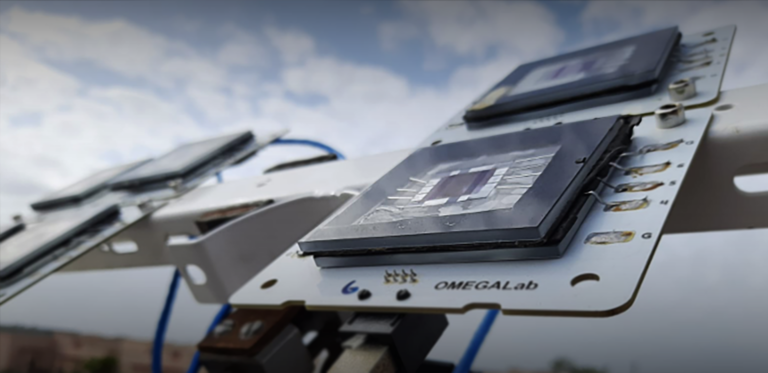Material Science and Engineering
Small tweaks enhance solar cell efficiency
Electron-rich organic polymers boost power conversion in solar cells.


‘PBDXTPD(R1/R2) is the organic polymer used to make more efficient solar cells.
© Advanced Materials/KAUST
Organic polymers with extensive aromatic backbones could be central in the development of next-generation, low-cost, high-efficiency solar cells, KAUST researchers suggest.
Traditional solar cells use crystalline silicon and inorganic semiconductor materials to harvest and convert sunlight into electricity. Multi-junction cells — which incorporate several layered materials with different responses to light wavelength due to their varying energy bandgaps — give higher performance than conventional cells. Until now, however, their high cost and complexity has meant limited use to specialized fields, such as aerospace. Organic cells, on the other hand, are widely used, despite low efficiencies, because their manufacture exploits inexpensive, readily scalable, and versatile materials.
Pierre Beaujuge and colleagues from the Solar & Photovoltaics Engineering Research Center, have developed a new series of organic polymers which offer enhanced power conversion in bulk heterojunction solar cells in which electron donor and acceptor are blended1. These π-conjugated polymers comprise multiple oxygen-containing aromatic rings, or furans, which enable them to donate electrons. The researchers generated the cells, combining these polymers with an electron-deficient fullerene derivative, called PCBM.
Beaujuge explains that, in addition to being accessible through natural sources, furan-based building blocks offer alternatives to thiophene — their sulfur-containing counterparts — to create high-performance organic solar cells and electronic devices.
To measure how small changes in molecular structure impact solar cell performance, the researchers synthesized the furan-based polymers and their thiophene analogues. The polymerization process produced high-molecular-weight polymers that remained soluble in the polymerization solvent, dichlorobenzene.
Beaujuge’s team fabricated the solar cells on glass substrates patterned with a transparent electrode consisting of indium tin oxide and a conductive polymer mixture. Next, they spin-cast the polymer donor–PCBM blends in dichlorobenzene solution on to these first electrodes to form thin films before successively depositing calcium and aluminum electrodes.
Assessing their performance, the team found that the furan-based polymer blends achieved higher maximum power conversion efficiencies than their thiophene-based counterparts which closely matched the efficiencies of the best organic cells. Solar cells using thiophene donors exhibited improved structural organization at the nanoscale when the additive was incorporated. This was in contrast to those involving oxygen-containing donors, which performed best without the additive — evidence for the distinct self-assembly behaviors of the polymers.
“The team is currently exploring various polymers and small molecules to forge a deeper understanding of how molecular structure and design affects material performance” said Beaujuge. “This insight may lead to multi-junction organic solar cells reaching fifteen percent efficiency”.
References
1. Warnan, J., Cabanetos, C., El Labban, A., Hansen, M. R., Tassone, C., et al. Ordering effects in benzo[1,2-b’]difuran-thieno[3,4-c]pyrrole-4,6-dione polymers with > 7% solar cell efficiency. Advanced Materials 26, 4357–4362 (2014). article
You might also like

Material Science and Engineering
Electron movie guides design of layered perovskite materials

Material Science and Engineering
Remote region sensor for essential vitamin deficiency

Material Science and Engineering
Low-power hydrogen sensor detects leaks in an instant

Material Science and Engineering
Illuminating pathways to long-lived organic solar cells

Chemistry
Beating the dark current for safer X-ray imaging

Chemical Engineering
Net benefits for advanced materials design

Material Science and Engineering
Atom-thin insulator grown into perfect films

Material Science and Engineering



